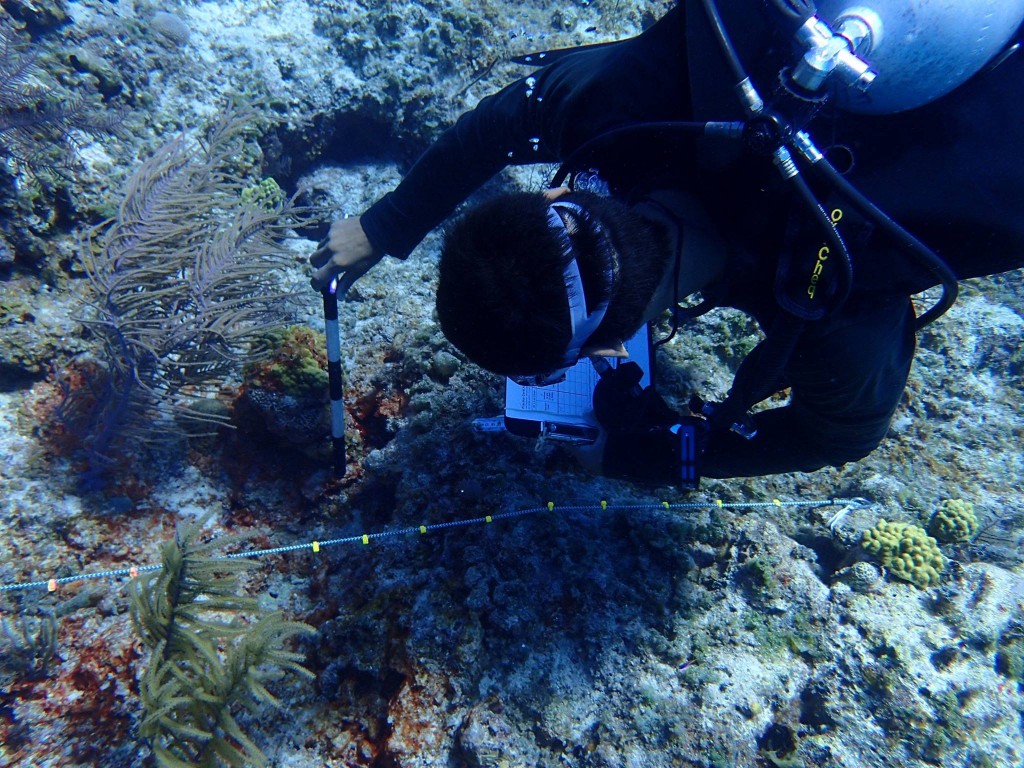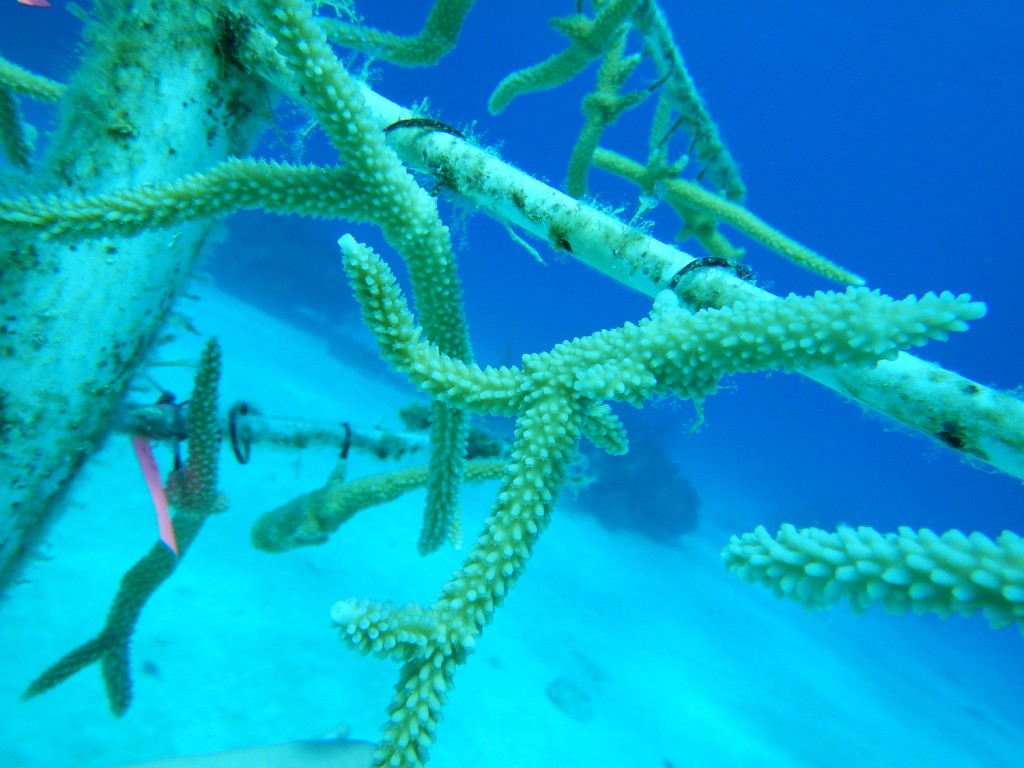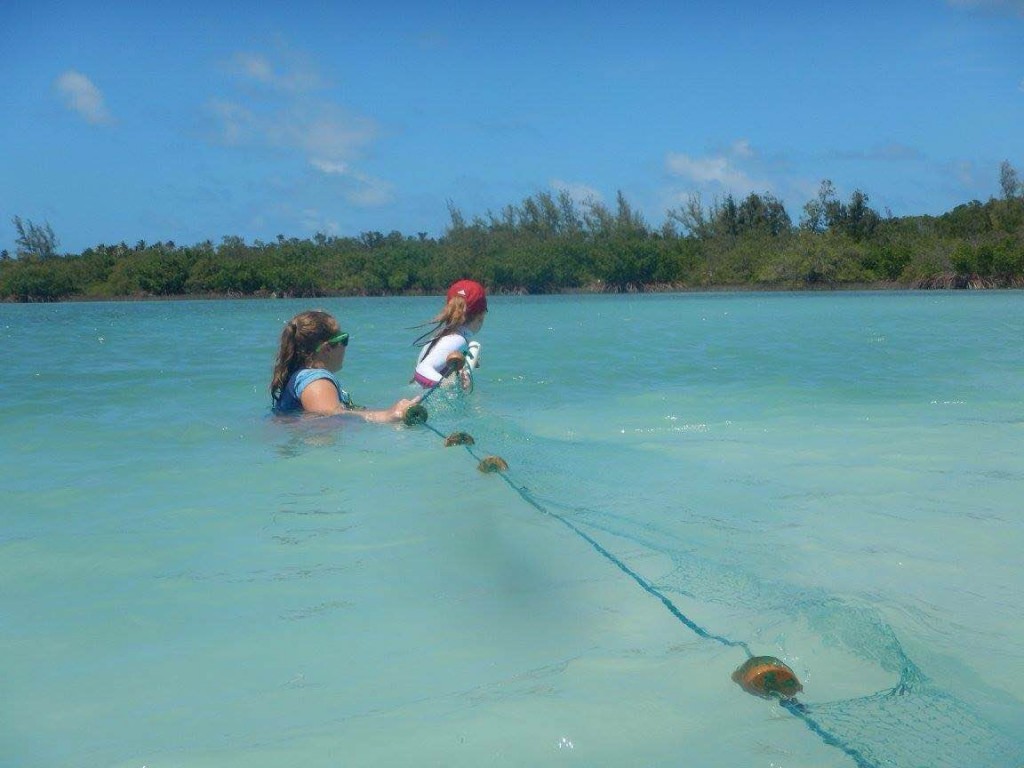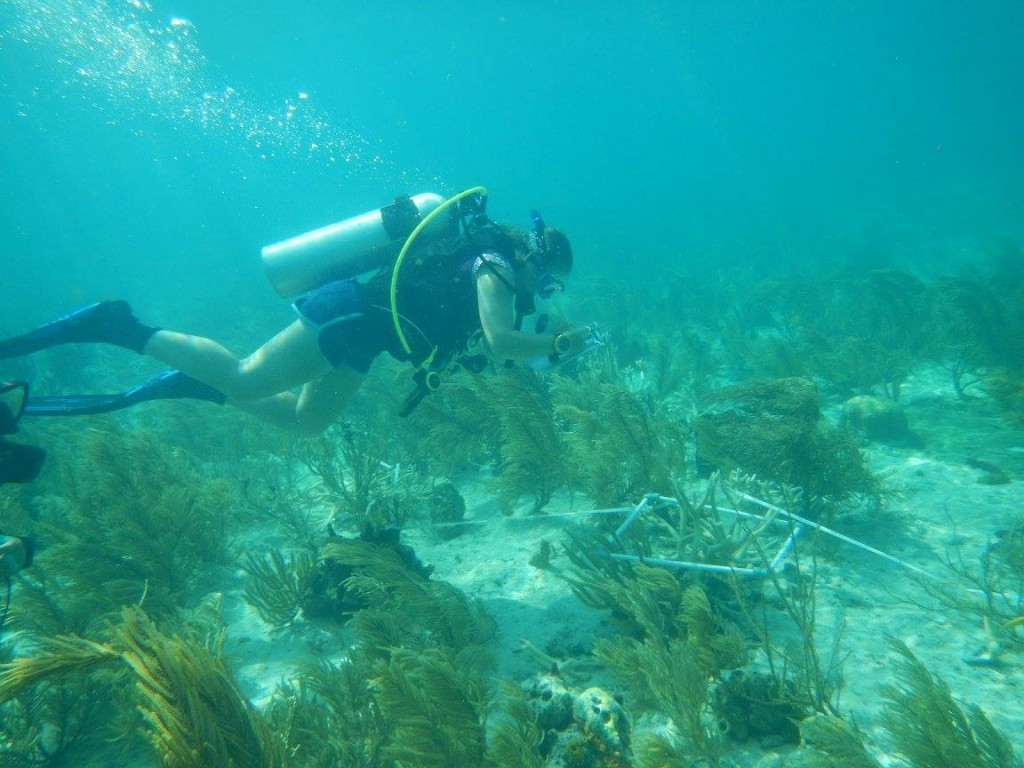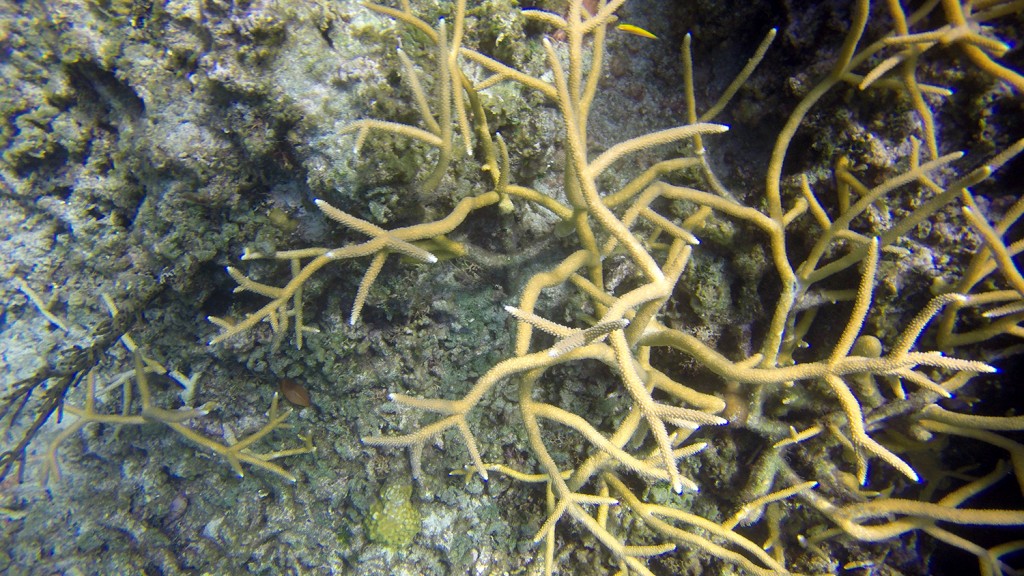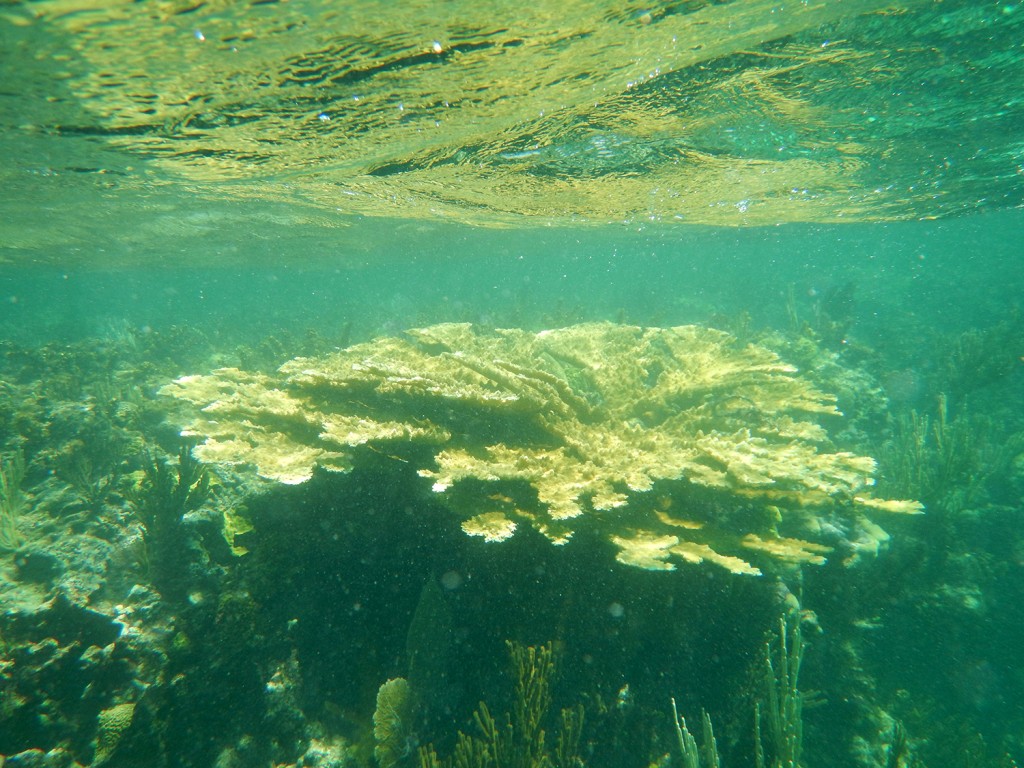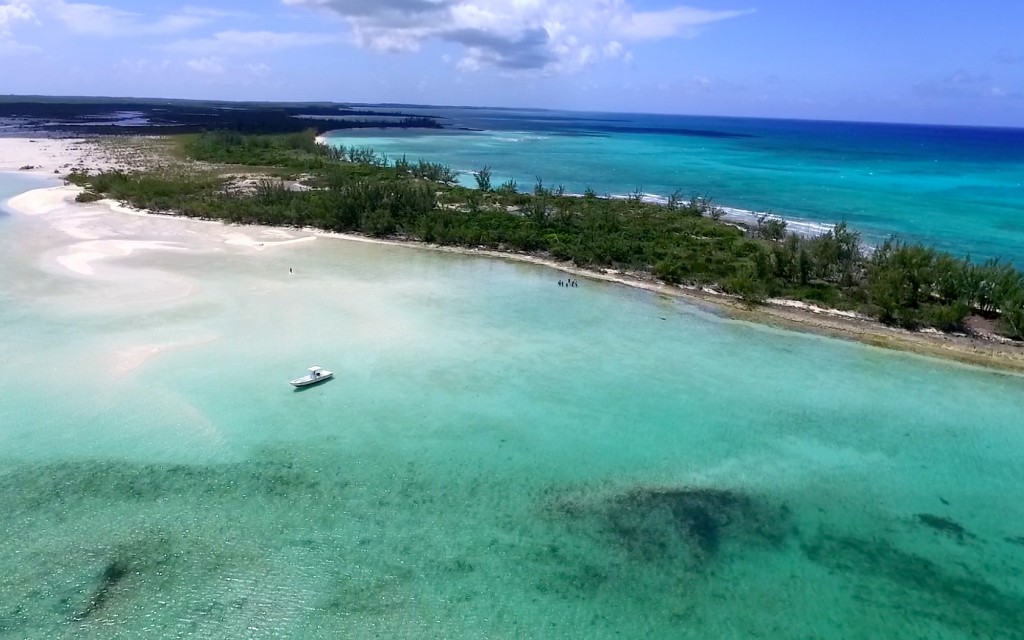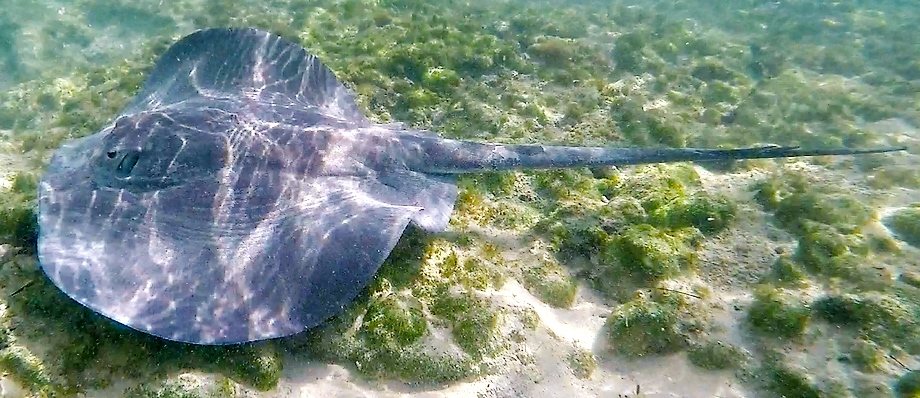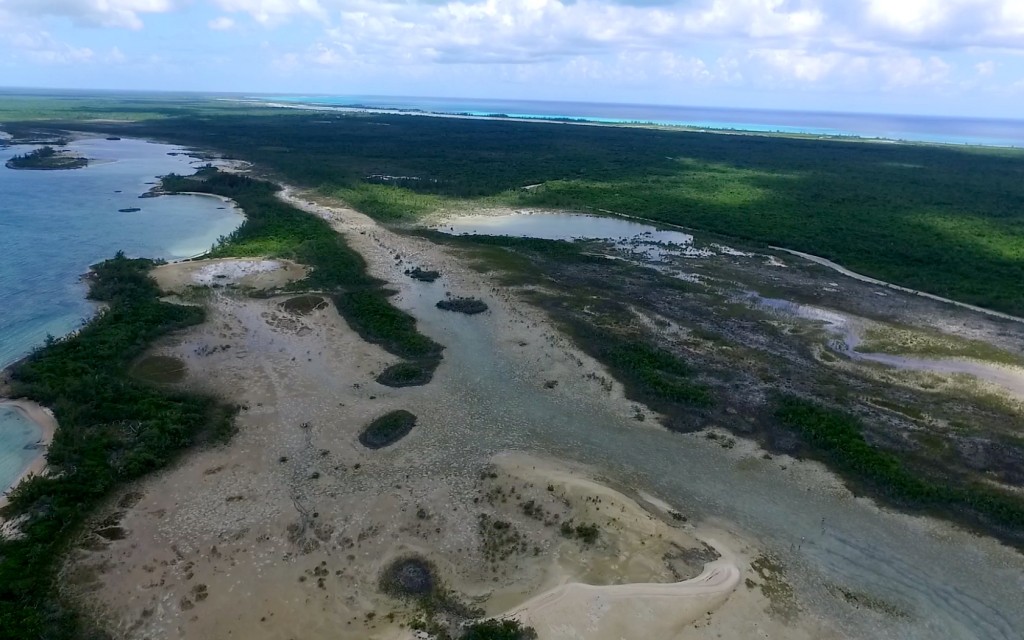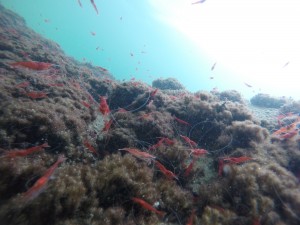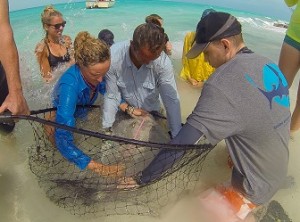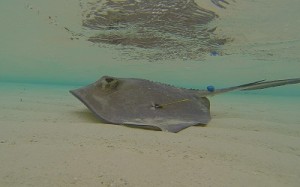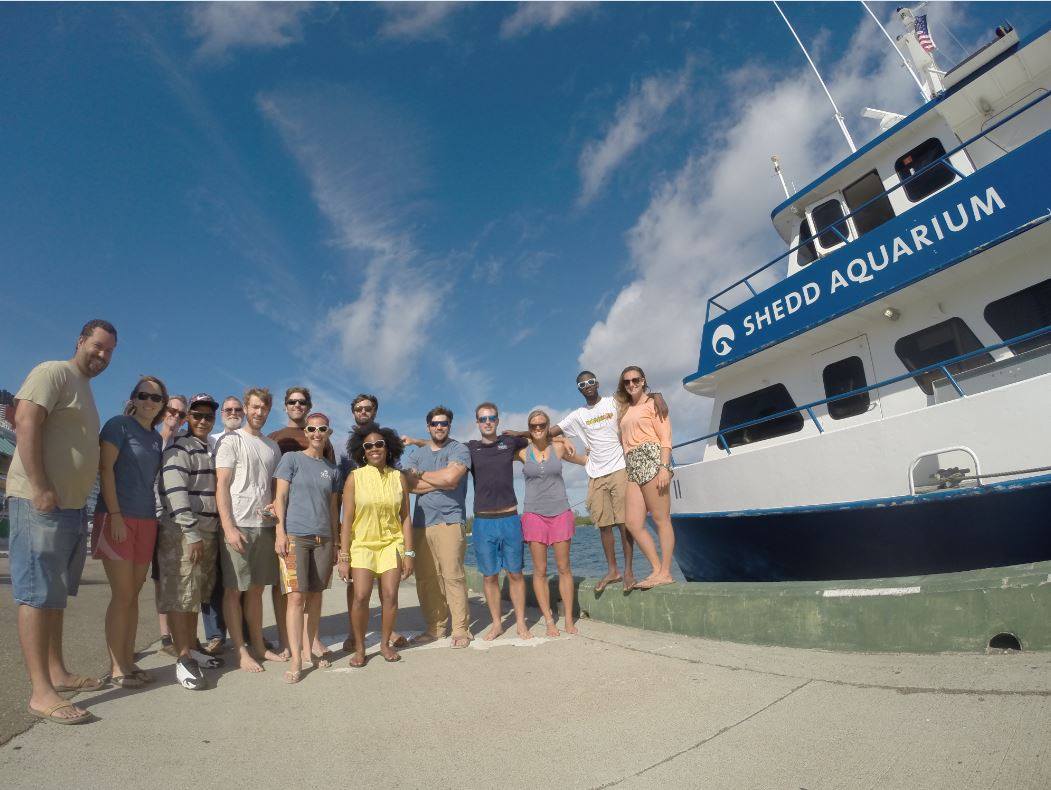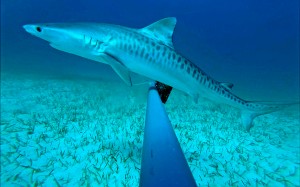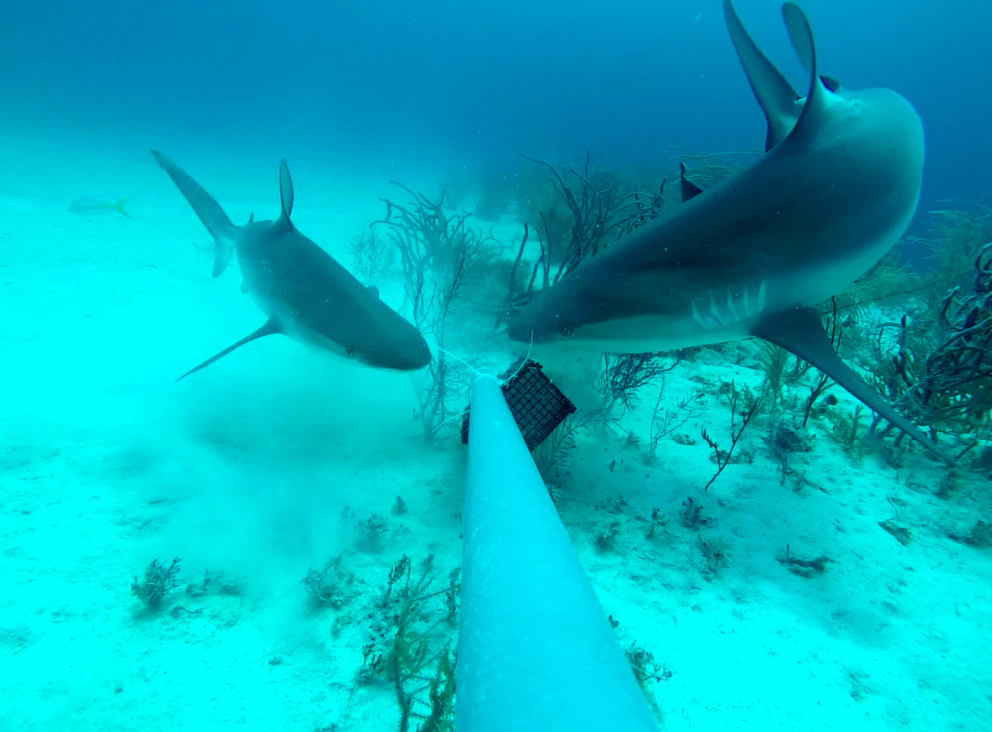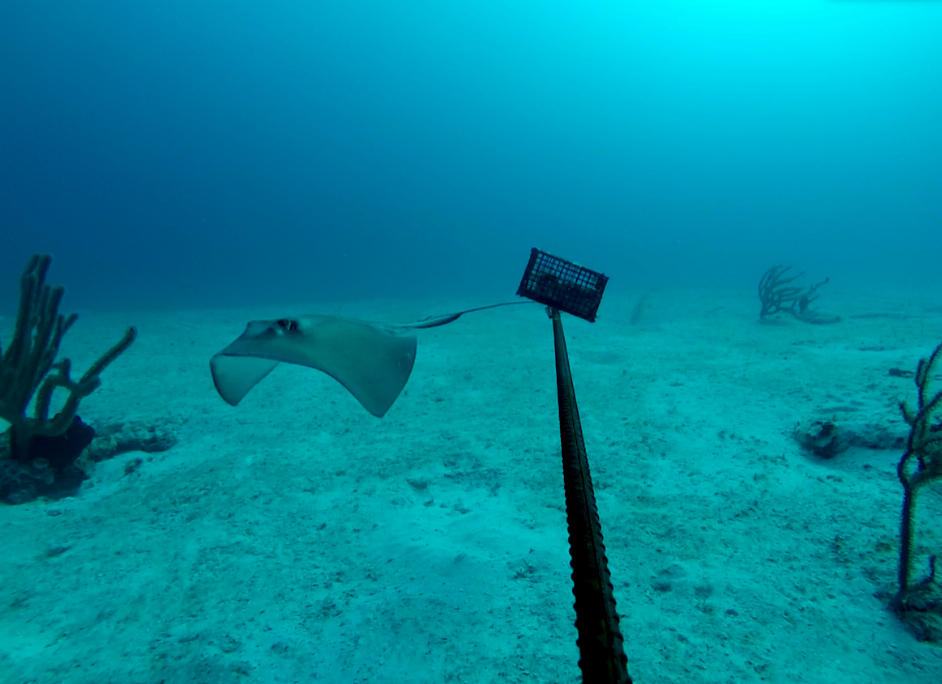SECORE (SExual COral REproduction) International arrived at the Cape Eleuthera Institute last month for a week of research focused on coral spawning. SECORE is a non-profit organization dedicated to the restoration of coral reefs using wild coral spawn, lab-based fertilization and breeding techniques and outplanting methods. Led by Dr. Dirk Peterson (founder and CEO), Christoph Haacke (BioDivers, Germany), Mark Schick (Shedd Aquarium, USA), and Mitch Carl (Henry Doorly Zoo and Aquarium, USA), the SECORE team believes that in order to rehabilitate degraded reefs, increasing coral survival, diversity and abundance through lab-based breeding techniques is essential. Dr. Peterson began his innovative coral breeding techniques in 2002 by fertilizing coral spawn and raising larvae in a lab. The coral restoration community took notice of his successes, and SECORE has since led projects in locations such as Guam, Mexico, Curaçao, and The Philippines. With reversing the decline of coral reefs a national priority in The Bahamas, SECORE aims to bring its expertise here to Eleuthera, in partnership with CEI, to help with rehabilitation and restoration efforts.

The focus of SECORE’s work in Eleuthera is Elkhorn coral (Acropora palmata), a critically endangered species. Elkhorn coral spawning has rarely been documented in The Bahamas, but is known to occur elsewhere in the Caribbean after sunset, during the days following August full moons. As the week-long workshop began, SECORE aimed its efforts on diving after sunset in high-density areas of Elkhorn coral in hopes of not only documenting the exact timing of the annual spawning event, but also collecting egg and sperm for fertilization back in the lab. To the group’s delight, the timing was perfect. SECORE and CEI documented Elkhorn coral spawning in Eleuthera for the first time! In addition, SECORE collected approximately one to two hundred thousand eggs from four different coral colonies that spawned simultaneously.

To ensure ample genetic diversity among corals fertilized in the lab, SECORE collects eggs and sperm from multiple Elkhorn coral colonies. This diversity is essential for the survival of this endangered species, which can be threatened by a genetic bottleneck as populations decline. Once SECORE induced fertilization, larvae were placed in a breeding chamber for development. Live rock similar to that upon which wild coral larvae attach on natural reefs was introduced to the tanks, allowing lab-reared corals to become established as would their wild counterparts. CEI’s and SECORE’s collaborative goal is to give juvenile corals a head-start by providing a predator-free, controlled environment where survival is enhanced during critical early growth stages. Once juveniles have survived in the lab beyond those critical early stages, they will be strategically out-planted onto local reefs in an effort to rehabilitate areas where Elkhorn corals are in decline.

Many thanks to SECORE International for educating scientists, students and conservationists on site during the visit, and for its continued work to rehabilitate populations of essential, reef-building corals not only in Eleuthera, but throughout the Caribbean.


